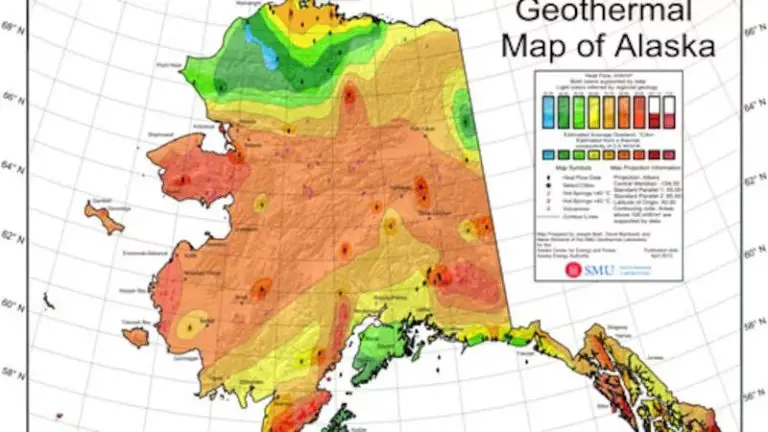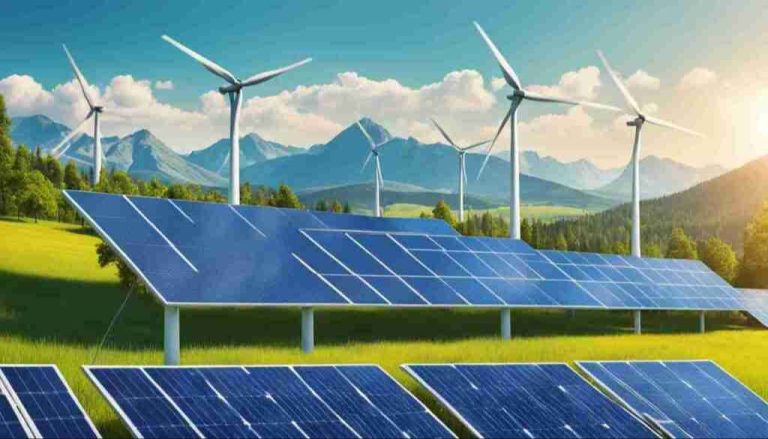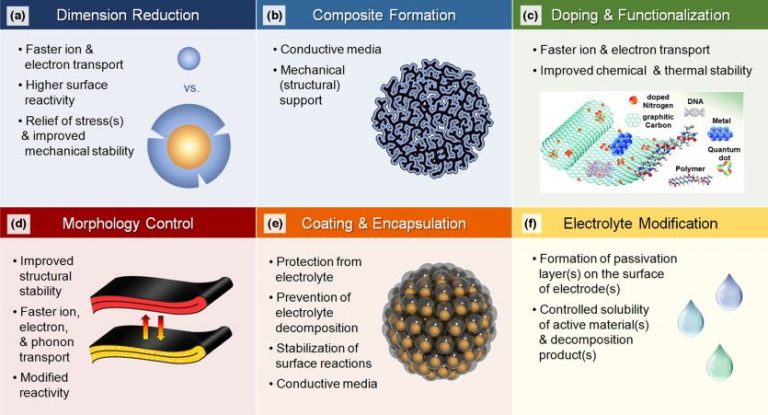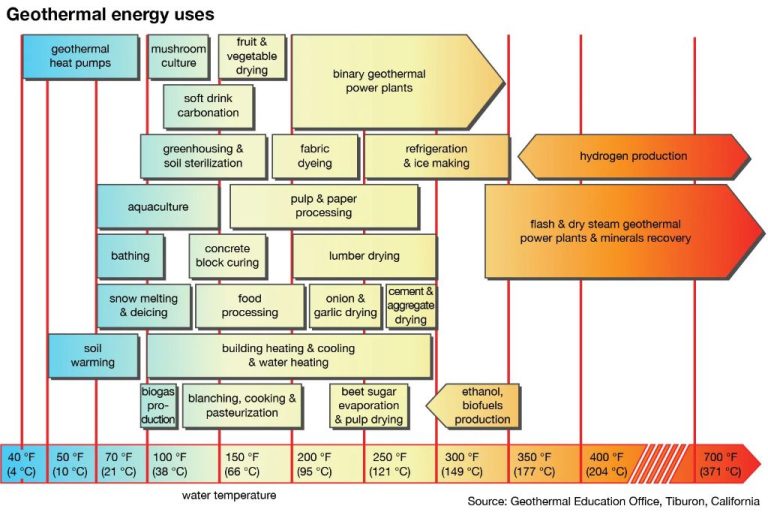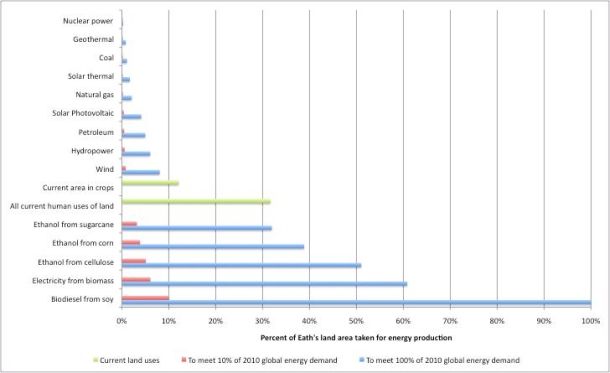How Much Of Us Energy Is Geothermal?
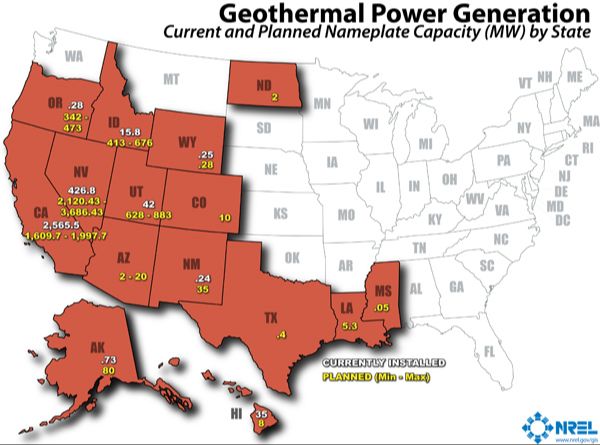
Geothermal energy is thermal energy generated and stored within the Earth. It arises from the original formation of the planet, from radioactive decay of minerals, and from solar energy absorbed at the surface. Geothermal energy has been used directly for heating for thousands of years. More recently, advances in technology have allowed us to tap it as a renewable energy source for electricity production.
In the United States, geothermal energy provides a small but rapidly growing share of the nation’s energy supply. As of 2021, geothermal energy accounted for 0.4% of total U.S. utility-scale electricity generation. The western states, Alaska, and Hawaii have the highest potential for expanding geothermal power generation due to availability of geothermal resources.
This article provides an overview of geothermal energy use and production in the United States. It explores the history, current installed capacity, direct use applications, economic and environmental impacts, and future outlook for geothermal energy in the US.
History of Geothermal Energy Use
Geothermal energy has been used for thousands of years in some parts of the world for cooking, heating, and bathing. The earliest uses were in China, Turkey, Japan, Iceland, New Zealand and Polynesia [1]. Native Americans also used geothermal waters for cooking, medicine, and bathing.
The first district heating system using geothermal energy was built in 1890 in Boise, Idaho. Pipes carried hot water from natural hot springs to warm homes and businesses [2]. This allowed Boise to become the first city in the United States to use geothermal district heating on a citywide scale.
The first geothermal power plant was built in 1904 in Tuscany, Italy. It was the first attempt to generate electricity from geothermal resources. In the 1920s, development of geothermal electricity generation began in California at The Geysers geothermal field.
Over time, as technology improved, geothermal energy production grew dramatically. By 2015, there were over 3,000 megawatts of installed geothermal capacity in the United States. Geothermal remains an important source of renewable baseload electricity generation and heating.
Geothermal Resources in the US
The United States has significant geothermal resources located across the western states, Alaska, and Hawaii. According to the National Renewable Energy Laboratory (NREL), the majority of identified hydrothermal resources capable of supporting electricity production are located in the western states of Alaska, Arizona, California, Colorado, Hawaii, Idaho, Montana, Nevada, New Mexico, Oregon, Utah, Washington, and Wyoming. There are additional undiscovered hydrothermal resources, as well as widespread enhanced geothermal systems (EGS), which could potentially support future geothermal development in these and other states.
The three main types of geothermal resources in the US are: hydrothermal convection systems, geopressured resources, and magma resources. Hydrothermal convection systems involve naturally circulating hot water and account for the vast majority of current geothermal electricity generation. These resources are typically found along tectonic plate boundaries and faults. Geopressured resources contain hot brines under high pressure deep underground. Magma resources involve extremely high temperatures near or below bodies of magma. EGS does not rely on natural convective hydrothermal resources, but instead circulates fluid through subsurface heat exchangers.
High temperature geothermal resources (greater than 150°C) are primarily concentrated in the western states along the Pacific Ring of Fire where tectonic plate boundaries allow heat from the Earth’s interior to rise nearer to the surface. Lower temperature geothermal resources (30-150°C) are more widespread across the US and generally require binary power plant technology to generate electricity.
Electricity Generation from Geothermal
The United States leads the world in geothermal electricity generation. In 2022, geothermal power plants in the United States had an installed capacity of over 3,700 megawatts (MW), generating enough electricity to power around 3 million homes. This accounted for 0.4% of total U.S. electricity generation and about 6% of domestic renewable electricity generation (EIA).
Most geothermal power plants are located in the western states, where geothermal resources are more abundant. California generates the most geothermal electricity, with nearly 40 geothermal power plants and over 2,700 MW of installed capacity. Other leading states include Nevada, Utah, and Hawaii (Department of Energy).
Geothermal power generation has gradually increased in recent decades as new technologies have expanded access to geothermal reservoirs. The geothermal industry expects steady long-term growth as new sites are identified and developed. Enhanced geothermal systems are a promising technology that could dramatically increase geothermal potential in the future.
Direct Use Applications
Geothermal energy can be used directly for heating purposes without converting it to electricity first. This is known as direct use of geothermal energy and accounts for a significant portion of geothermal utilization in the United States. Some of the major direct uses of geothermal energy include:
Heating for buildings – Geothermal heat pumps and district heating systems can provide heating and cooling for residential and commercial buildings. According to the Geothermal Technologies Office, there are over 1.5 million geothermal heat pumps installed in homes and buildings across the U.S. as of 2020.
Greenhouse heating – Geothermal fluids provide a stable and reliable energy source for heating greenhouses year-round. This allows extended growing seasons and the ability to grow produce that wouldn’t survive colder temperatures.
Aquaculture – Warm geothermal waters can be used in fish farming to raise tropical fish and alligators that would not thrive in colder temperatures.
Industrial applications – Geothermal energy powers a number of industrial processes that require heat, including paper production, milk pasteurization, gold mining and laundries.
According to the Geothermal Technologies Program, direct use of geothermal energy in the United States exceeds the energy equivalent of 3,100 megawatts of electricity. With a wide variety of applications, direct use provides a valuable way to utilize America’s geothermal resources.
Environmental Impacts
Geothermal energy does have some environmental impacts that must be managed properly according to the Union of Concerned Scientists. Most geothermal power plants require large land areas to extract heat from reservoirs in the ground. Typical geothermal plants require 1-8 acres per megawatt of power generation capacity, which can disrupt natural habitats and take up valuable land resources.
Geothermal plants also produce emissions from non-condensable gases dissolved in geothermal fluids, including carbon dioxide, hydrogen sulfide, ammonia, methane, and boron. These emissions must be controlled using scrubber technology to meet clean air standards. While emission levels are generally lower than fossil fuel plants, they can still negatively impact air quality if not properly managed.
There is also a risk of induced seismicity or earthquakes from geothermal drilling and operations. High-pressure fluid injection and extraction can cause small tremors, though induced quakes are rare. Proper siting, monitoring, and operational practices are necessary to minimize seismic risks according to the U.S. Fish & Wildlife Service.
Finally, geothermal plants use significant volumes of water for cooling and reinjection back into reservoirs. Typical geothermal plants can use 2000-5000 gallons per minute. Water consumption must be managed to avoid depleting groundwater resources or impacting natural habitats.
Economic Impacts
Geothermal energy provides significant economic benefits in the United States. The geothermal industry has seen steady investment and job creation over the past decade. In 2021 alone, over $800 million was invested in geothermal projects, and the industry employed almost 8,000 people across architecture, construction, engineering, drilling, materials/equipment supply, project management, and other roles (1).
The levelized cost of electricity from geothermal plants is competitive with other renewable energy sources. According to the U.S. Energy Information Administration, the average levelized cost for geothermal plants entering service in 2026 is estimated to be around 7 cents per kWh (2). This is comparable to onshore wind and utility-scale solar. The low operating costs contribute to geothermal’s economic viability.
However, high upfront capital costs for drilling and resource exploration present challenges. Federal tax incentives have helped offset these costs and stimulate project development (3). Overall, geothermal provides affordable, reliable electricity with substantial economic opportunities.
Sources:
(1) https://www.nrel.gov/docs/fy05osti/35939.pdf
(2) https://energy5.com/the-economic-viability-of-geothermal-energy-in-electricity-generation
(3) https://sites.lafayette.edu/egrs352-sp14-geothermal/contexts-and-consequences/cost/
Future Outlook
The U.S. Department of Energy (DOE) sees significant potential for growth in geothermal energy production in the coming decades. According to a DOE report, geothermal power could provide 60 gigawatts of baseload electricity generation in the U.S. by 2050, meeting approximately 5% of national electricity demand. The DOE has mapped over 100 gigawatts of undiscovered hydrothermal resources across the western U.S. that could potentially be tapped with conventional geothermal techniques. Additionally, enhanced geothermal systems (EGS) could unlock up to 500 gigawatts of geothermal resource potential nationwide.
The DOE has developed a strategic plan and roadmap to advance EGS research and enable 5 gigawatts of EGS capacity by 2030. Key goals include improving subsurface characterization and drilling technologies to access deeper resources between 3-10 kilometers underground. Ongoing EGS demonstration projects at Newberry Volcano in Oregon and Milford, Utah aim to validate and optimize reservoir creation techniques. Government incentives and policy support will also help drive geothermal growth and innovation in the coming years.
Challenges
While geothermal energy has many benefits, it also faces some key challenges that have limited its growth. Three major challenges are the high upfront costs, drilling risks, and policy uncertainty.
Constructing a geothermal power plant requires significant upfront capital investment. Drilling geothermal wells thousands of feet into the earth is an expensive and risky endeavor, with no guarantee of finding a viable resource. The exploratory drilling phase alone can cost millions of dollars with the risk of drilling a dry hole. The overall capital costs for a geothermal power plant range from $2-5 million per megawatt of capacity, higher than most other renewable energy technologies.[1]
Drilling also poses technical risks and uncertainties. Wells may not find adequate geothermal resources or the reservoir could deplete faster than expected. There is a small risk of triggering seismic events from injecting water underground. Hitting zones with high temperatures, pressures, or corrosive chemicals can damage equipment and add costs.[2] These drilling risks deter investment in new geothermal projects.
Lastly, inconsistent policy support has hampered growth of geothermal energy in the US. Tax credits and incentives for geothermal plants have fluctuated over time, creating uncertainty for project developers. Lengthy permitting processes also deter investment. Clear and consistent policies that account for the high upfront costs of geothermal could help drive additional growth.[3]
Conclusions
In conclusion, geothermal energy currently makes up a small but growing share of US energy production. While the US has abundant geothermal resources, growth has been constrained by high upfront costs and other challenges. Key facts include:
- Geothermal accounted for 0.4% of total US energy consumption in 2019.
- The US has the potential to generate up to 40,000 MW of geothermal power, but only produces around 3,800 MW currently.
- 24 US states have active geothermal power plants, but California produces the most.
- Direct use applications like heating buildings and greenhouses is also growing rapidly.
- Geothermal energy is renewable, reliable, and emits little greenhouse gases.
Looking ahead, continued technological advances and policy support could allow geothermal to play a larger role in a clean energy future for the US. However, high upfront development costs and other challenges must be addressed. With further innovation and supportive policies, geothermal energy can help states like California and others unlock more of their abundant geothermal resource potential.

